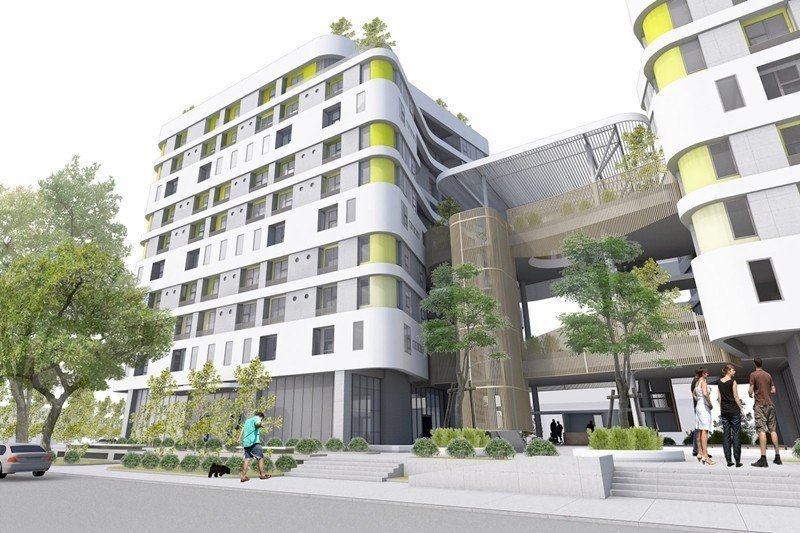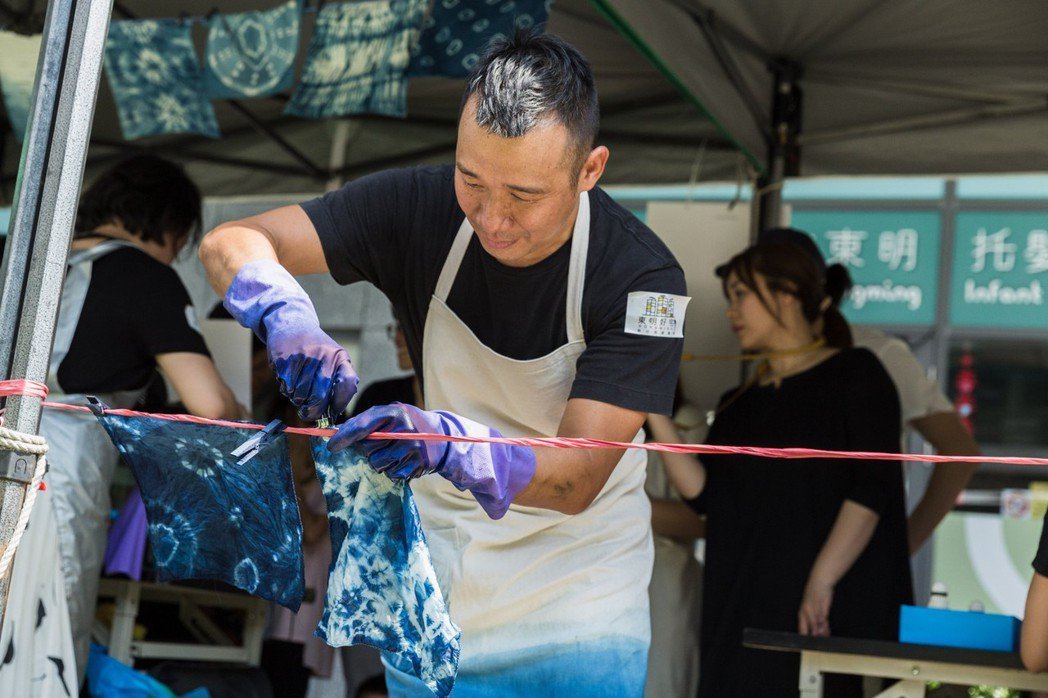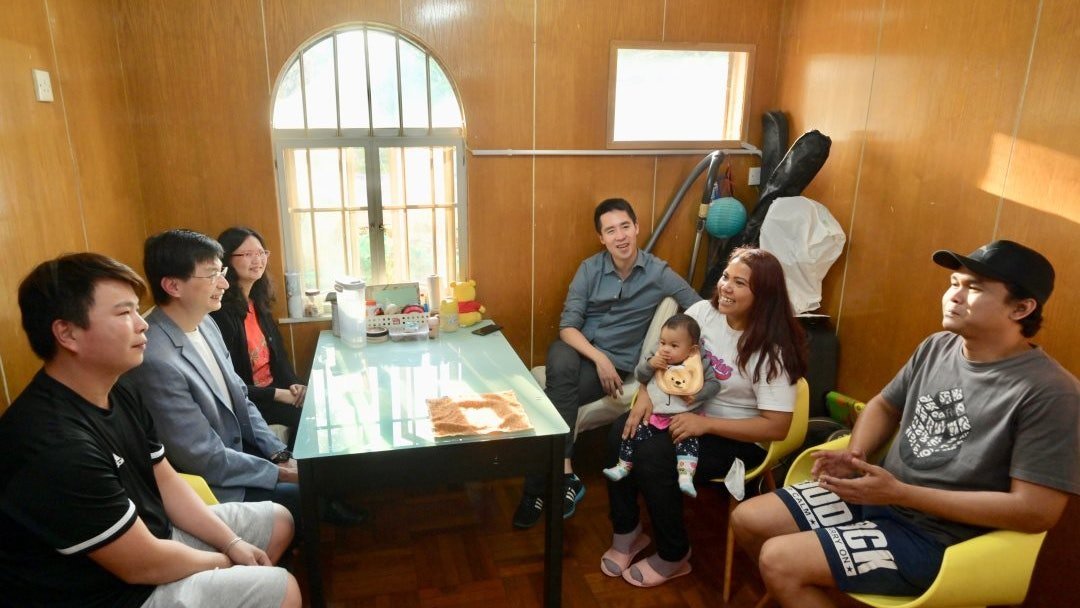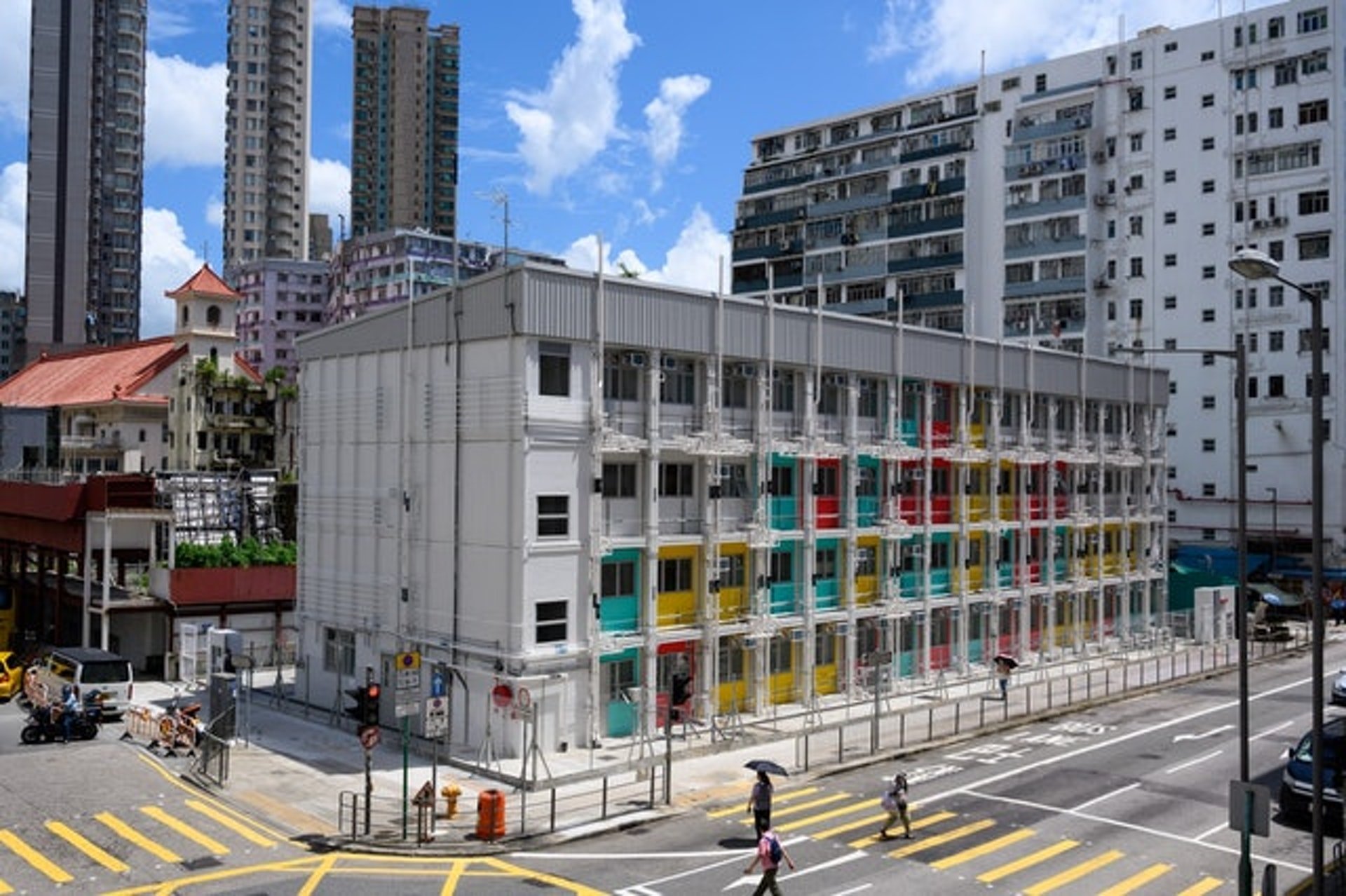台港經驗交流:共居共鄰共享 以人為本住屋未來|Sharedness via Co-living: An Exchange between Taiwan and Hong Kong on People-centred Approach for Future Housing










台灣跟香港相似,大眾買樓租屋都不是易事,民間因而探尋共居的可能。我們早前網上舉辦「吉人客廳」活動,邀請兩地的共居組織及建築學者,分享箇中經驗,雖然兩個城巿的社會結構不同,政策、需求也不一樣,但在共居實驗路上的經驗與思考,還是值得互相借鏡,例如,有時你以為是房子設計問題,但說到底原來都與「人」有關。
如果,共居是人們可以嘗試的生活新模式,而這種模式仍然需要時間探索、實驗,在面對逼切房屋問題、土地問題的香港,如何尋找空間、時間發掘更好的居住模式,就成為最大的挑戰了。
台灣:社群取代血緣連繫
「真的有人住嗎?」台灣官員第一次聽共居概念時,忍不住問詹竣傑。他所屬的OURs都市改革組織,過去不止一次推動房屋改革,12年前,OURs倡議社會住宅(類似香港公屋),近年則推動巿民共居,以回應社會變化。
詹竣傑引述台灣官方數據,20至45歲人口群組有43%未婚,而沒有孩子的家庭則佔三分之一,意味社會逐漸難以由「血緣」來聯繫,「以前大家買房子時,都是兄弟姊妹幫忙付貸款,現在愈來愈困難,取而代之的是社群」。宜蘭有個「幸福家園實驗社區」,聚合教養理念相近的家庭,正是社群例子之一。
同時,年輕一代對於買樓的反思,也推動共居可能。「華人是不是一定要『有土先有財』?還是因為我們的公屋很少、租房不好,我們才一定要買房子?」加上共享經濟概念流入台灣,「大家愈來愈接受,(房子)好好使用就好,不一定擁有」。
考慮民間對共居認識不多,OURs現時通過出版書籍、舉辦活動,連結對共居有興趣的人士,例如年輕人、銀髮族、女性等,讓這群人有機會坐下來交流,慢慢成為一個共居社群。OURs也嘗試向政府租房子,像是眷村、政府宿舍等,再外借給共居社群。他們期望累積共居案例,再向政府爭取,成為正式政策。
毋須社工介入 居民也能混熟
相對台灣的共居大多以「價值觀」作為連繫,香港的共居,則無可避免地因要解決土地問題而興起的另一種居住模式。輪候公屋,平均要6.1年,在漫長的等待期間,基層大多只能選擇環境欠佳的劏房。徐珮恩是社區組織協會 (SoCo)社區組織幹事,她的工作就是為等待的基層提供過渡房屋服務。她在經歷6年時間、參與接近360個單位的經驗後,有這樣的反思:「共居是很好的理念⋯⋯但到了真正營運,是困難。」
SoCo最初的試驗,是翻新租金較低的老房子,再供兩個或以上的家庭搬入來,廚廁需要共用。徐形容共居效果不算理想,由於兩個家庭事前不認識、沒有基礎信任,共用設施易有爭拗。
於是SoCo開始進化:空間設計上,為家庭多留私人空間,如盡量各自有獨立廁所。組織也會安排家庭在入住前交流見面。徐記得他們變熟後,「即使沒有坐下來共用的地方,也看到他們在廚房一直聊天」。但這已是最理想的共居狀態嗎?不是,組織仍然受限於老房子維修、面積不足、業主決定不租的問題。
圖片:網上
Things are similar in Taiwan and Hong Kong when it comes to owning a home, that it is no easy task to either buy or rent a flat. Therefore people started exploring the concept of co-living as an alternative lifestyle. In June, we hosted an online event “GUTS: Lounge - Online Salon” by presenting a line-up of members of co-living advocacy groups and scholars in the field of architecture from both Taiwan and Hong Kong. Despite the differences on social structures, policies and housing demands between the two places, the exchange among experts did offer valuable insights surrounding the notion of co-living experiences. For instance, sometimes designers or policy-makers should dig deeper to identify the root causes of issues, which are usually “people problems”.
If co-living is considered a possible new way of living, then the society needs a more thorough exploration of this emerging trend via continuous experiments and evaluations. The pursuit of a more liveable environment is particularly relevant to Hong Kong, a city known for the shortage of land supply and the pressing housing demand.
In Taiwan: Community Over Kinship System
“Will this really work?”—this is the initial response of government officials in Taiwan to the concept of co-living when they first heard of it from Chunchieh Chan, the Executive Secretary & Policy Researcher of the Organization of Urban Re-s (OURs). OURs is an organisation that advocates urban reforms, and housing reform is one of the items on their agenda. 12 years ago, OURs put forward a social housing initiative that was similar to the idea of public housing in Hong Kong. In view of the social changes in recent years, OURs has switched to promote the practice of co-living.
According to Chunchieh Chan, Taiwan’s official statistics reveal that 43% of the population aged between 20 and 45 are unmarried while one-third of families consist of married couples without children. These demographics point to a future in which the social fabric would no longer be dependent on the kinship system. “People used to share house mortgages with their siblings, which is getting increasingly uncommon due to the changes in family structure. Nowadays, people are turning towards communities”, says Chan. For instance, an organisation in the Yi Lan County adopts the community-oriented approach and brings together families that share similar parenting philosophies.
At the same time, the young generations’ new thoughts on the housing market provides a catalyst for co-living as a new way of living. “Is the concept of ‘getting a house in order to get rich’ an unshakable belief in Chinese communities? Or people’s obsession with buying property comes from the limitations of public housing and the problems of renting a flat?”—Chan elaborates on the youth’s reflections upon housing, and adds that the emergence of the sharing economy in Taiwan has made a difference. “People are getting open to the idea that they do not need to own a house. All they need is a comfortable and affordable home.”
In order to facilitate a deeper understanding of co-living among the society, OURs works on publications and hosts events to bring together different groups of people who are interested in co-living, including the youth, the elderly and women. A co-living community is gradually formed once they are provided with a platform. In parallel, OURs approached the government to further develop their co-living initiatives. Their proposal is to first rent houses such as military villages and government quarters, which would then be leased to co-living groups. The goal of OURs is to launch more co-living projects such that the government would officially consider co-living part of a social policy.
Community-building through Common Values, not Social Work Intervention Alone
In Taiwan, values are the key to building close-knit co-living communities. Sadly in Hong Kong, the greatest driving force behind co-living is land scarcity. The housing demand of the grassroots is so pressing that applicants queuing for public housing have to wait 6.1 years on average. Therefore, most of the applicants could only afford the city’s notorious subdivided flats before being allocated a rental flat. Jennie Chui, the Community Organizer of the Society for Community Organization (SoCO), has been serving the underprivileged families in the public housing queue for 6 years, during which she was involved in around 360 families’ applications for public housing flats. She concludes her views towards co-living, “the concept of co-living is great, but it is a tough job putting the idea into practice.”
For SoCo’s initial co-living schemes, old and low-rent apartments were renovated to provide accommodation for two or more families who were required to share the kitchen and bathroom. Jennie recalls that the results were rather unsatisfactory, as the families only got to know each other after being put under the same roof. With the absence of mutual understanding and trust, quarrels became inevitable as they needed to share the facilities.
Drawing upon the lessons learnt, SoCo improved their co-living schemes in multiple ways. For instance, in terms of space allocation, they’d offer as much private space for each family as possible, such as setting aside private bathrooms. They also arranged pre-move-in meetings between tenants such that they got to know each other earlier. Jennie remembers vividly how the tenants became a lot closer after they introduced these changes, “(the tenants) would talk to each other in the kitchen even if there was no common dining room.” Given these visible improvements, SoCo thinks their path of actualising ideal co-living schemes is still long, as the organisation continues to struggle with various issues, including maintenance, tiny flats and the landlords’ termination of tenancy.
In view of these challenges, SoCo has adopted a new approach. Like OURs in Taiwan, SoCo searched for idle government sites and designed the houses on their own to meet the grassroots’ needs. Their learnings from years of experiments and evaluations have been consolidated and reflected in their upcoming project “Transitional Social Housing Service: Ying Wa Module Community”, which will commence in 2022. Members in the neighbourhood have been invited to participate in the design process. The final design plan provides not only private living space, but also a large area for outdoor activities. “In the past, social workers would need to actively bridge the gap between tenants. But this is no longer necessary as well-designed spaces would naturally bring tenants together ", says Jennie. She adds that though the scheme has met with encouraging responses at the initial stages, it is not a perfect model and modifications are necessary for social housing in the future. For instance, areas for outdoor activities are always nice-to-haves, but they come at a high cost; private funds are needed on top of government support; and it is difficult to secure sites in the vicinity of urban areas for the grassroot working class.
Discover Tenants’ Film Preferences to Create Co-living Harmony
In fact, there are other organisations in Hong Kong working on creating better co-living experiences. “Co-Housing Hong Kong”, formed by a group of 5 people who devote their spare time to running two co-living flats, is an example. Their tenants are mainly young people. Co-founder Josie Cheng shares that the two flats are located further away from the city centre, such that they can afford more spacious houses. The inspiration of their flats’ design comes from the Netflix programme Terrace House, which adopts a simplistic design style and offers an open kitchen to provide a setting that encourages tenants to chat and cook. In order to identify tenants who share similar interests, the team has spared much time for the interviews. Applicants were asked specific questions about their lifestyles, such as their favourite films and favourite cities. These seemingly-poetic questions indeed can help the team understand applicants’ characters, which is crucial to cultivating a harmonious co-living environment.
It is still too early to conclude whether there exists a “best operation model” or a “best design” for co-living spaces today. But we are lucky that different organisations have devoted efforts in recent years on implementing various co-living schemes. Their experiences provide a solid ground for us to reflect and rethink: what constitutes a desirable co-living environment? And what does it take to achieve this goal? Factors such as funding, policy and design are of course important. The key to creating liveable co-living spaces, however, lies in upholding the “people-centred” concept. The representatives of OURs point out that ideal co-living companions should be willing to listen as well as open to share and discuss his or her own opinions. “Co-Housing Hong Kong” shows that though spatial design makes a difference, the defining factor is still the chemistry between tenants. SoCo shares an observation from their experiments, that a living room would be turned into a mere storage area if the co-housing families could not befriend each other.
More importantly, one should never neglect the role of design when it comes to housing and liveability. Getting the right design can subtly guide users to make the most out of a space. As how Dr. Mo Kar Him, the Co-founder of Happy Ageing Lab, concludes, a city that does not pay attention to design and planning will be filled with ironies. The fact that while SoCo has to fight hard for the inclusion of public space in transitional housing projects, the common areas in public housing estates are often under-utilised—if not idle—is one of them.
Image: Internet
你可能對以下吉人吉事有興趣:
You may also be interested in these GUTS Stories:


